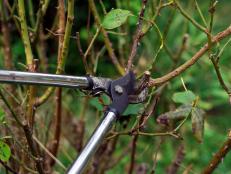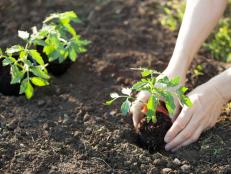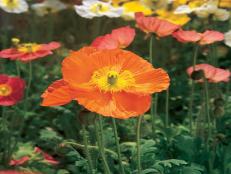Q&A: Overwintering Bananas
Q: I have a two-foot banana planted in my yard. I planted it in the early spring and before that had it in a pot indoors. Is it safe to leave it outside all winter?
— R.J., Long Island, N.Y.
A: It depends on what type of banana you have. Because your banana is only about two feet tall after the growing season, you might have Musa acuminata 'Super Dwarf Cavendish'. This diminutive banana reaches just two to four feet tall. It has green foliage and can produce fruit. Due to its compact habit, it's an ideal tropical for containers or planting around a patio. Since it's hardy in USDA Zones 8 to 10 and you live in a Zone 6 climate, this banana should be dug, transplanted to a container and brought indoors for the winter. As a houseplant, provide it with low to moderate light and occasional watering; don't let the soil dry out completely.
There are several larger-sized bananas also not hardy in your zone. Musa acuminata, 'Dwarf Cavendish' and 'Sumatrana' (also sometimes known as M. acuminata 'Zebrina') have clumping habits. Dwarf Cavendish has green leaves while Sumatrana has green leaves with red striping. Red Abyssinian banana (Ensete ventricosum 'Maurelli') has gorgeous green foliage blushed with red and complemented by scarlet-red leaf petioles. It grows to 10 feet tall and does not clump. Hardy in Zones 9 to 10, these bananas should be dug and taken inside for the winter.
If you're looking for a banana that's hardy in your USDA Zone 6, consider growing hardy banana (Musa basjoo) or Chinese yellow banana (Musella lasiocarpa). Hardy banana has become quite popular with gardeners for its cold hardiness and bold tropical foliage. Hardy in Zones 6 to 10, it grows eight to 10 feet tall in one growing season and has green foliage and occasional non-tasty fruit. Chinese yellow banana has gray-green leaves and reaches about six feet tall. It's valued for its striking, bright yellow flower (not fruit). Chinese yellow banana is hardy to Zones 7 to 10 and marginally hardy to Zone 6. Both have clumping habits. To help both overwinter, you can cut them back after a killing frost and apply a thick layer of mulch over the plant's crown. Or, let the leaves collapse on top of the plant, providing additional insulation. Add mulch around the base of the plant.












































